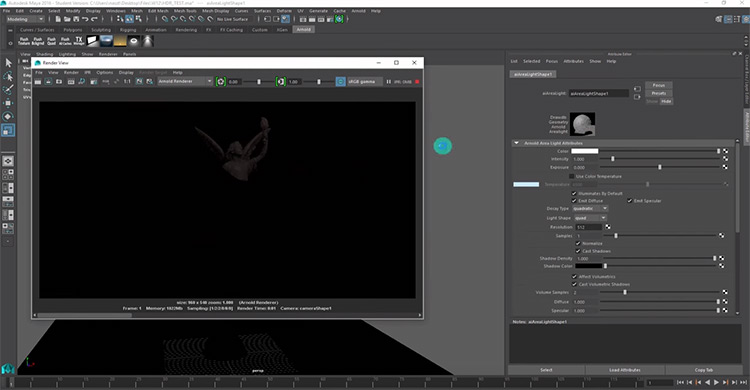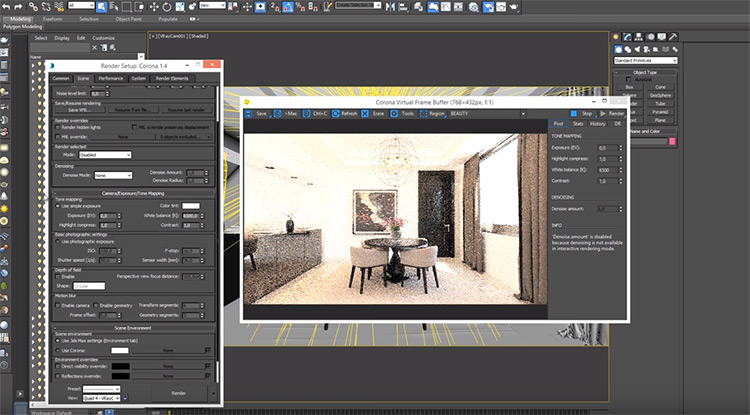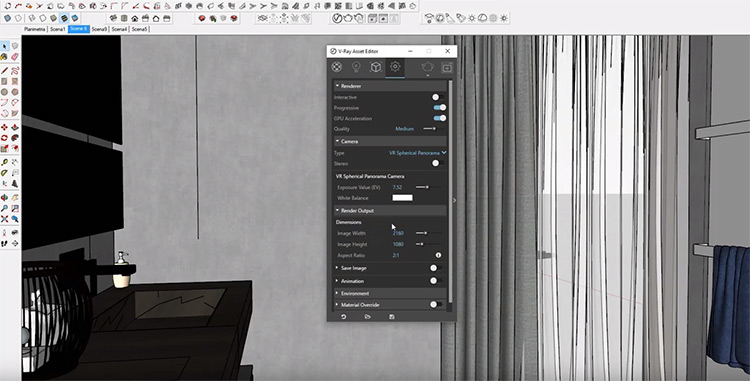Arnold, Corona & V-Ray Render Engines: What Exactly Do They Do?
Arnold, Corona & 5-Ray Return Engines: What Exactly Do They Do?
Tips3D Disclosure: This post may contain chapter links. That means if yous buy something we go a small commission at no extra cost to you(learn more)
Depending on what the final product is, a 3D artist will need a render engine to plough their 3D scene into a completed 2D image.
Information technology is the return engine's job to calculate all the lighting and geometry in your scene and how they all interact with each other and your materials.
It can exist quite an intensive job for yous PC and can accept several hours depending on the scene. How you return is calculated and eventually turns out is reliant on your render engine.
In this commodity I volition discuss iii of the most popular render engines on the marketplace right at present. Hopefully it can give you an idea of the pros and cons of each one and figure out which is a good starting bespeak for you.
Arnold
Arnold Renderer was kickoff conceived in 1997 (And then called RenderAPI) by Marcos Fajardo who wanted to build a render engine that used ray tracing to calculate the terminal results.
It uses a specific method of ray tracing (chosen path tracing or Monte Carlo ray tracing) that sends many random possible low-cal paths at each pixel then averaging them to find the "correct" final result.
This method is regarded as 1 of the most authentic methods of calculating lighting in a scene.

This is also known as unbiased rendering, whereas biased rendering will bounce less light paths and guess the difference betwixt them. This often gives quicker return times just tin can cause small lighting errors.
In recent years the visual deviation between the two has become smaller and smaller. Then while an unbiased render engine does give the most realistic result mathematically, a biased render may not look much different at all.
Arnold recently introduced the ability to utilize GPU rendering in early 2019.
This allows you to quickly render approximations of your terminal image. With this you lot tin can visualise how certain textures and lighting will interact together in your final return without having to wait hours to come across the results.
And it is often used past many big budget studios including Sony Animation where it's been used in loftier budget films such as "The Avengers" (2012) and "Pacific Rim" (2013).
Due to its popularity it was somewhen bought by Autodesk in 2016. Arnold is compatible with nigh popular 3D software such every bit Maya, 3ds Max, Cinema 4D and Houdini.
Corona
Corona is by far the youngest engine on this list. Just has come a long manner in that brusk amount of time and quickly has go regarded as a professional level engine used past many studios.
Kickoff starting development in 2009 every bit a student project in Prague, it soon joined a partnership with Chaosgroup merely eight years afterwards in 2017.

This partnership means information technology is compatible with Chaosgroup's pop fluid effect simulator Phoenix FD.
Arnold, equally previously mentioned, uses unbiased rendering (path tracing) which is very proficient for getting perfect results of lighting that are always replicated from return to render.
Corona uses what they call "(un)bias" rendering, which is a hybrid between the two forms of render calculations.
This can decrease render times while making minimal divergence to the concluding issue, apart from some complex lighting caustics. Check out this commodity for a bit more info.
Corona also has a built in de-noiser that uses data from the render passes and your 3D scene to help remove noise from the paradigm, meaning you don't have to wait for the entire render calculation to complete.
Like Arnold, Corona besides has an interactive GPU rendering pick to apace view approximations of your terminal consequence.
It also comes with a plethora of other useful plugins and features, similar real time post processing effects in the render frame window (or buffer) and fifty-fifty the ability to modify your lighting mid return using the interactive light mixing tool.
Information technology also comes with a small-scale material library that you can use to instantly bring elements of your scene to life, or as a base of operations template to build from.

But one of Coronas biggest drawback at the moment is that it only works in 3ds Max and Cinema 4D. The team is working to bring it to more platforms in the future simply for now you'll need to work around these limitations if y'all want to run Corona.
V-Ray
V-Ray boasts the strongest full-blooded of whatsoever render engine on this listing, with most whatever 3D artist being able to tell you what it is.
Formed in 1997 in Bulgaria by Chaosgroup, information technology is known for its incredible versatility and wide array of CG options.
It uses a ray tracing(biased) method for computing scenes and includes an option to render on both the CPU and GPU at the aforementioned time, assuasive you to go a product quality render in less fourth dimension than an engine that is purely CPU based.

It is also compatible with Chaosgroup's other main plugin, Phoenix FD, which allows you to get accurate fluid simulations for water, fire, fume, or explosions.
And like Corona, is has a long listing of features to aid you process your concluding output and improve render times.
V-Ray also has existent time post processing effects such as lens artefacts acquired by dust straight lighting, and even a tool to simulate a rolling shutter.
These features let you lot to make your renders look more like a existent world photo. Although usually the advantage of working in CGI is that you can avoid these imperfections.
Proceed that in mind while you work.
V-Ray is used by a large range of studios producing Hollywood films. For instance "Avengers: Infinity State of war" (2018) and "Game of Thrones" both use Five-Ray.
Information technology is also uniform with almost whatever 3D software y'all can remember of from SketchUp to 3ds Max and Maya, and everything else in between! We curated a huge list of tutorials on V-Ray and then if you're interested in this renderer definitely check out that list to get started.
Playing around is the best way to learn, but I hope this guide helps you in deciding which engine you may want to delve deeper into.
And remember there are many other return engines out in that location so information technology may be worth doing some more research too!
Source: https://conceptartempire.com/arnold-corona-vray-render-engines/
0 Response to "Arnold, Corona & V-Ray Render Engines: What Exactly Do They Do?"
Post a Comment